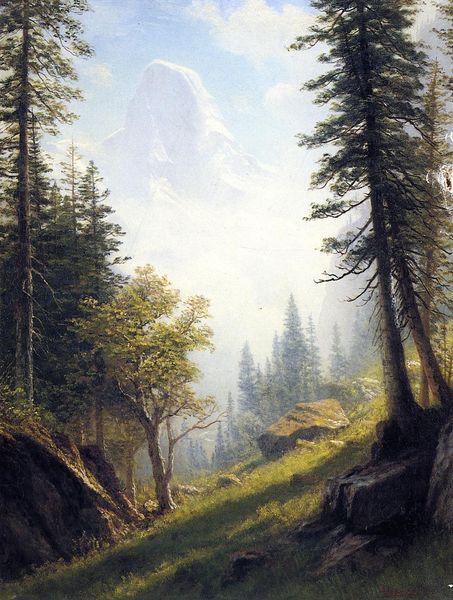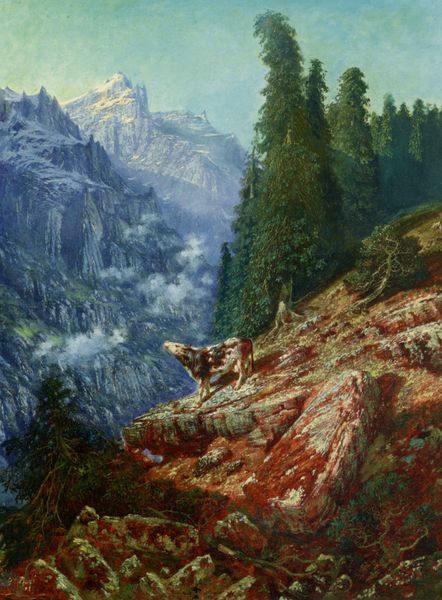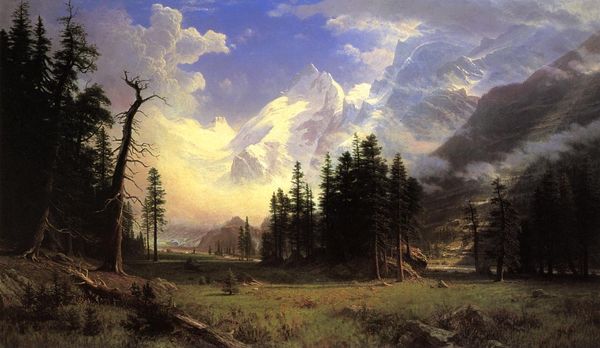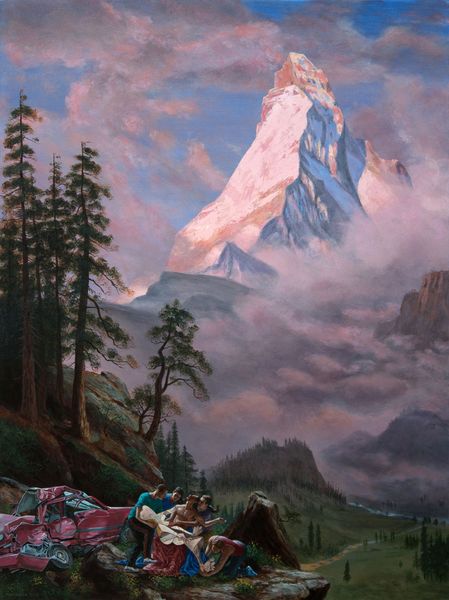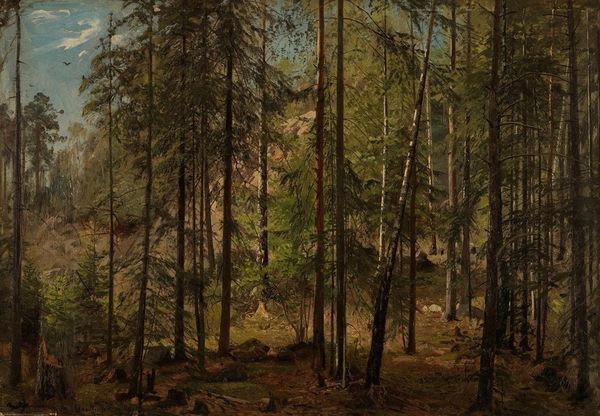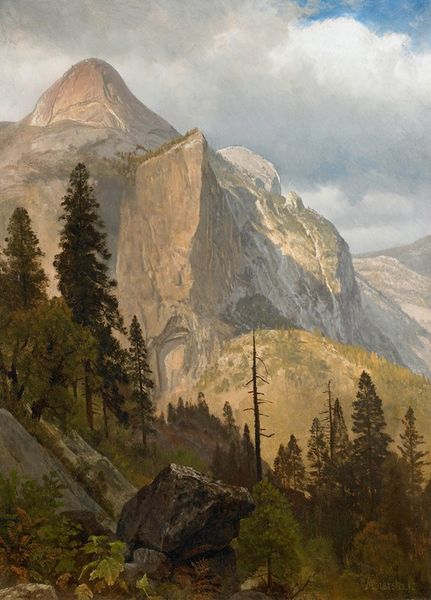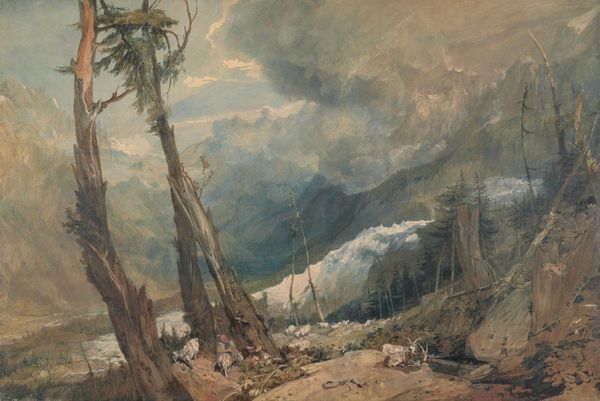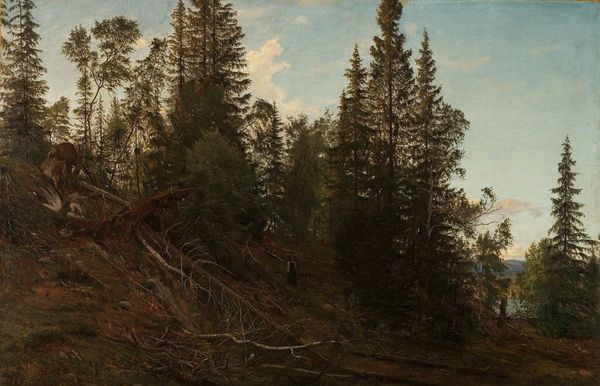
Copyright: Public domain
Editor: Right in front of us, we have Caspar David Friedrich's "Mountain Peak with Drifting Clouds," painted in 1835. Looking at this landscape, the first thing that strikes me is the contrasting mix of serene sky and the raw, almost melancholic foreground. What do you see in this piece, particularly regarding its social or historical context? Curator: The painting emerges from a time of burgeoning nationalism in Germany, doesn’t it? Consider the Romantics' embrace of nature, not just for its beauty, but as a symbol of national identity. Friedrich wasn't just painting a mountain; he was depicting the German landscape, the German soul, shrouded in a somewhat dreamlike atmosphere. How do you think the rise of museums and art academies shaped Friedrich’s work and its reception? Editor: That's a compelling point. I suppose institutions would both elevate and standardize artistic styles. Is Friedrich's particular take on landscape painting somehow influenced by this tension? Curator: Absolutely. Friedrich operated within a specific art world, aware of the debates around landscape painting, its purpose, and its perceived national significance. The museums displayed landscapes next to history paintings; do you see Friedrich attempting to ennoble landscape with the grandeur associated with historical subjects? Look at how the mountains loom. Editor: It does seem like Friedrich elevated the status of landscapes to match other high art. Thinking about it now, the mountains definitely serve as a solemn symbol. It makes me consider how landscapes reflect social aspirations of those times. Curator: Precisely! And that social meaning evolved. After his death, and through the later 19th century, Friedrich’s paintings languished. It was the early 20th century, with rising nationalist fervor, that these kinds of landscape depictions gained new attention. Art is never viewed in a vacuum; our current context inevitably shapes what we see, isn’t it? Editor: Yes, absolutely. Thinking about the different eras that have celebrated or dismissed the painting definitely changed my perspective. I didn't think about the painting as political. Curator: It’s a perfect example of how a work can be shaped, not just by its creation, but also by its subsequent reception and integration into art historical narratives and the power dynamics within those institutions.
Comments
No comments
Be the first to comment and join the conversation on the ultimate creative platform.
